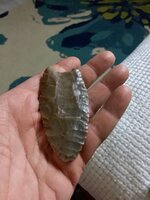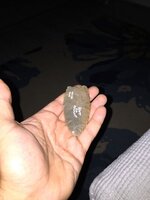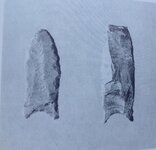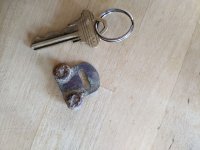IAMZIM
Bronze Member
- Apr 23, 2011
- 1,567
- 2,160
- Detector(s) used
- ace 250/garret pinpointer, garret AT Gold
- Primary Interest:
- All Treasure Hunting
Here is my question: Why does it seem that most Clovis points in particular have more of a rounded point than other points? And also, do yo think they were mostly used as knives or lancelet's? I can't seem to find anything in google about the answers to these particular questions, maybe I'm not wording it right?
Upvote
0







